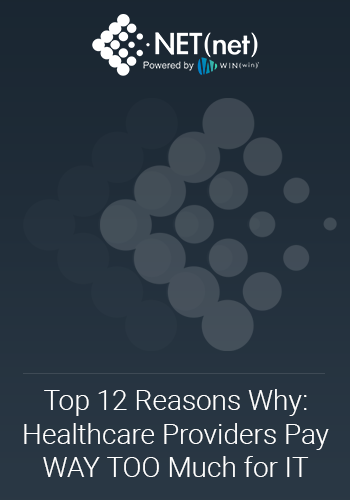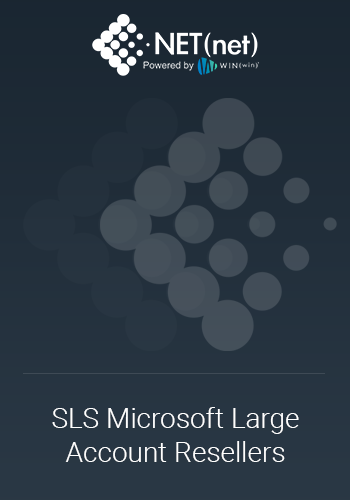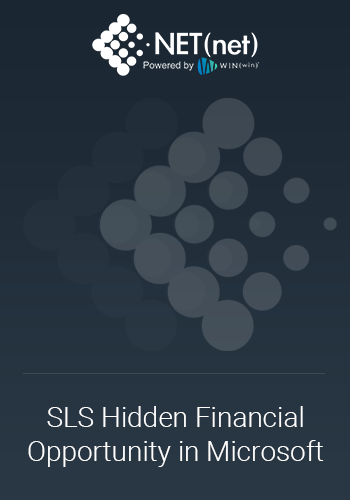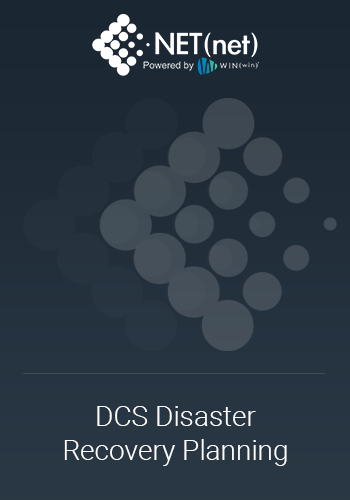Preface
A big story in the first quarter of 2023, is that the era of hyper-accelerated cloud migrations, which has been causing unassailable growth for the major cloud computing providers, may be slowing.
- Last quarter, Amazon (AWS) posted 'the slowest growth in its history' at 27.5%, down from 33% the quarter before.
- Cloud Growth at Azure, and GCP is slowing too as customers get a dose of cloud 'cost reality' or what we like to call, Price-Shock.
As it turns out, cloud deployments are not always cheaper than implementations on-premises, and many client organizations are determining that previous cloud-migrated workloads may not deliver the benefits they originally sought -- especially for those workloads that are data-intensive rather than compute-intensive.
This is actually great news for the market as these revelations will continue to put significant downward pricing pressure on cloud providers to 'meet the market demands' of clients with data-intensive applications that are looking to migrate to the cloud.
In our approach and analysis, we always seek to fully understand all the data implications of any potential workload migration, and pressure suppliers to develop non-standard ways to accommodate what would otherwise be exceedingly high data transfer, processing, and storage costs so that clients aren't surprised to find that their cloud migration (that was designed to save them money) has ended up costing them more. Prohibitive costs can be a critical negotiation item, but only if they are known in advance.
We received a lot of feedback on our recent 3-part series on cloud costs, naturally - most of it from the buyer community, but surprisingly also a lot from the seller community; an acknowledgment of sorts that cloud computing has a few blind spots and the fatigue of continual cost overruns in certain applications were starting to take a toll and resulting in customer disputes and indeed, workload repatriations.
As a result of these and other factors, multi-cloud management and hybrid cloud are rapidly becoming the preferred strategic approach over a standardized approach with AWS or Azure for a number of reasons.
- Multi-cloud management allows client organizations to choose the best services from multiple cloud providers. This approach enables businesses to avoid supplier lock-in and gain more control over their cloud environments. By having multiple cloud providers, businesses can choose the best solution for their specific workload needs, such as the best pricing, features, and geographic locations.
- Hybrid cloud allows client organizations to maintain their critical applications and data on-premises while utilizing the cloud for scalable workloads or backup and disaster recovery. With a hybrid cloud strategy, businesses can enjoy the benefits of the cloud while still keeping their sensitive data secure and accessible on-premises.
- Multi-cloud and hybrid cloud solutions provide greater resiliency and redundancy. With multiple cloud providers, businesses can distribute their workloads across different clouds to avoid a single point of failure. Additionally, having both on-premises and cloud infrastructure ensures that the business can continue to operate even if one part of their infrastructure fails.
- A multi-cloud and hybrid cloud strategy provides greater flexibility for businesses. As their needs change, they can easily scale up or down their cloud resources, choosing the most appropriate cloud provider for each workload. This approach also allows businesses to choose the cloud provider that provides the best performance, security, or compliance features.
In summary, a multi-cloud management and hybrid cloud strategy is the preferred approach for businesses looking for greater control, flexibility, resiliency, and redundancy in their cloud infrastructure. By leveraging multiple cloud providers, businesses can optimize their cloud environments to best suit their needs, while still maintaining control over their data and applications.
Democratization
The democratization of cloud computing refers to the process of making cloud computing resources and services accessible and available to client organizations regardless of size, capability, maturity, or other limiting factors. It aims to remove barriers and promote equal opportunities for users to leverage the benefits of cloud computing.
Here are some key aspects and characteristics of the democratization of cloud computing:
- Accessibility: Cloud computing providers are constantly working to simplify the onboarding process and make their services accessible to users with varying levels of technical expertise. This involves developing user-friendly interfaces, providing comprehensive documentation and tutorials, and offering support channels for assistance.
- Cost Efficiency: Cloud computing has become more cost-effective over time, allowing organizations with limited budgets to leverage powerful computing resources without significant upfront investments. Pay-as-you-go pricing models enable users to pay only for the resources they consume, eliminating the need for costly infrastructure procurement and maintenance.
- Scalability and Flexibility: Cloud computing offers the ability to scale resources up or down based on demand. Users can easily expand their infrastructure during peak periods and scale back during periods of low usage. This scalability allows businesses to adjust their computing resources to match their needs and optimize cost efficiency.
- Services and Tools: Cloud service providers offer a wide range of services and tools that can be utilized without the need for extensive technical knowledge. These include pre-configured virtual machines, managed databases, serverless computing, artificial intelligence (AI) services, and more. Users can leverage these services to build and deploy applications without worrying about the underlying infrastructure.
- Global Availability: Cloud computing providers have established data centers in various geographic locations worldwide. This global infrastructure allows users to deploy their applications closer to their target audience, reducing latency and improving performance. It also enables businesses to expand their operations globally without the need for physical infrastructure in each location.
- Collaboration and Innovation: Cloud computing fosters collaboration and innovation by providing shared platforms and services. Developers, researchers, and businesses can leverage cloud-based collaboration tools, version control systems, and continuous integration/continuous deployment (CI/CD) pipelines to work together seamlessly and accelerate the development and deployment of applications.
Overall, the democratization of cloud computing has opened up new opportunities for individuals, small businesses, and organizations to leverage the power of cloud-based resources and services. It has helped level the playing field, enabling users with diverse backgrounds and resources to access and utilize cloud computing technology to drive innovation, productivity, and growth.
Review our 3-part series on Cloud Costs:
Take a look back at our recently completed 3-part series on cloud costs, where we detailed the top 5 price shock phenomena of cloud computing, and how those shocking prices were often caused by migrated workloads that turned out not to be well suited for cloud computing, and how those workloads not well suited for cloud deployments often resulted in the repatriation of those previously migrated cloud workloads back on-premises to the client organization.
- Part 1: The Top 5 Price Shock Phenomena of Cloud Costs
- Part 2: The Top 5 Workloads NOT Well Suited for the Cloud
- Part 3: The Top 5 Reasons Why Clients Are Repatriating Workloads
How to Save on Cloud
Cloud computing offers many benefits, including, but not limited to, increased flexibility, more agility, and the ability to access applications and data from anywhere on any device with a basic internet connection, but it also comes with some potential trade-offs in terms of performance, security, and data sovereignty.
Bad News
The dirty secret in this industry is that at least 30% of all cloud spend is waste. This waste can be attributed to a number of factors, such as idle resources, oversized instances, underutilized reserved instances, and a lack of automation among other factors.
Good News
By implementing cloud cost optimization strategies, such as rightsizing, automating instance usage, and regularly reviewing usage patterns, client organizations can significantly reduce cloud waste and reduce their cloud spend.
So you may want to seriously evaluate a cloud cost optimization initiative before you pay another bill, migrate another workload, or consider repatriating another application where costs have overrun budget projections.
If you want to save money on cloud, here are the top five (5) most important things you can do:
- Benchmark. Everyone should Price-Benchmark their cloud spend. NET(net) can quickly price benchmark your AWS, Azure, and/or GCP deal in an accelerated fashion (usually within 3 business days), and show you how much you can save.
- Plug-In. NET(net) utilizes proprietary machine learning technology to analyze workload utilization and compares that to supplier obligations, and pricing & savings plans, and then leverages artificial intelligence to concurrently model thousands of potential instance permutations to determine what changes to future workloads and usage dynamics will result in what costs, turning raw data into useful, impactful, and actionable cost savings guidance.
- Cloud Cost Audit (CCA). After a short duration of data capture, our team can produce a 'heat map'. In most cases, there are solution configuration options and settings that can be changed which will result in lower costs. For example, using cloud computing and storage resources instead of physical servers can often result in considerable savings with minimal disruption and/or no discernable performance implication.
- Cloud Cost Optimization (CCO). Implement NET(net)'s unilateral plan for ongoing cloud cost optimization by (i) utilizing auto-scaling and right-sizing of resources, (ii) using spot instances for non-critical tasks, (iii) choosing the most cost-effective pricing models for various workloads, (iv) taking advantage of reserved instances and committed use discounts where appropriate, (v) avoiding data transfer overage charges through proper network optimization, (vi) monitoring resource utilization and optimizing accordingly, (vii) using managed services and avoid expensive managed databases, (viii) implementing cost-saving tools like AWS Cost Explorer, (ix) enabling and optimizing cost-saving features such as AWS Trusted Advisor, and (x) using open source alternatives where possible.
- (Re)Negotiate Commercial and Contractual Terms with your Supplier(s). Engage NET(net) to help you harvest value from your Cloud spend. NET(net) has considerable experience negotiating some of the world’s biggest, most complex Cloud deals, and has helped clients save billions in this category. Whether it's AWS, Azure, GCP, or one of the many other options, NET(net) can help you secure non-standard concessions that will help you save money and improve value. Sign up now for a Savings Cloud subscription, and we will get started right away.
About NET(net)
Founded in 2002, NET(net) is the world’s leading IT Investment Optimization firm, helping clients find, get, and keep more economic and strategic value in their technology supply chains. Over the last 20 years, NET(net) has influenced trillions of investment, captured hundreds of billions of value, and has helped clients cost and value optimize XaaS, Cloud, Hardware, Software, Services, Healthcare, Outsourcing, Infrastructure, Telecommunications, and other areas of IT spend. NET(net) has the experience you want, demonstrates the expertise you need, and delivers the performance you demand and deserve. Contact us at info@netnetweb.com, visit us online at www.netnetweb.com, or call us at +1 (616) 546-3100 to see if we can help you capture more value in your IT investments, agreements, deployments, and relationships.
NET(net)’s Website/Blogs/Articles and other content is subject to NET(net)’s legal terms, offered for general information purposes only, and while NET(net) may offer views and opinions regarding the subject matter, such views and opinions are not intended to malign or disparage any other company or other individual or group.

















